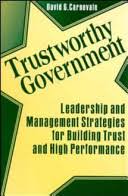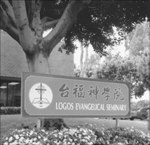 (Reprinted with permission from the journal College and Research Libraries, written by Michael Ryan.)
(Reprinted with permission from the journal College and Research Libraries, written by Michael Ryan.)
The title of this timely volume by Sheila Slaughter and Larry L. Leslie, Academic Capitalism: Politics, Policies, and the Entrepreneurial University, is deliberately provocative. Without even mentioning the dreaded and dated Marx, the authors have produced a convincing analysis of the transition of the academy from its own protected form of feudalism to a predatory capitalism. This is not happy reading, but few librarians who have spent their careers in university libraries will fail to recognize their own institutions in the transformations the authors chart. The institution for which I work recently hired a manager for library enterprises. Now I know why.
The book’s argument is straightforward. The globalization (hated word) of the marketplace has diminished the piece of the pie available to European and North American economies. Governments in turn have retreated from the traditional form of support for higher education, at once cutting back and putting more strings on allocated funds. Universities have responded by seeking new revenue streams from private sources, most notably from the marketplace. And this development, the authors argue, is producing changes in the academy “as great as the changes in academic labor which occurred in the last quarter of the nineteenth century.” In other words, what they claim to be describing are long-term changes in the ethos, aims, and management of universities—changes that have wedded them and their futures to the vagaries of the global marketplace.
The social and economic entente between the mandarins and society, forged in the late nineteenth century, virtually insulated faculty from the competition of the marketplace. According to the authors, this has all but collapsed. The discipline of the profession has been supplanted by the discipline of the marketplace. Faculty and their knowledge are in the process of being transformed into commodities. Francis Bacon, the sixteenth century essayist, was fond of touting the power of knowledge. In the late twentieth century, knowledge is capital and capital is power—except if your knowledge is not valued. Librarians know about these things.
The authors focus on public institutions in the Anglophone world—North America, Australia, and the United Kingdom—and find similar trends in each. Canada is often the odd country out, but it too is realizing that national and provincial educational policies have to become much more market-sensitive. To the evidence of the numbers, the authors add an extensive series of interviews with faculty and administrators. Taken together, the conclusion is inescapable that what is occurring in universities today is not merely local, but global.
What, then, are the consequences to universities of this structural shift? Some have been evident for a while. The departments and disciplines closest to the marketplace are those with the most clout within institutions—hence the increasing dominance of the science, technology, and medicine faculties in the contemporary research university. They have the knowledge that the market values and, within universities, they traditionally have had the closest ties to industry. At the same time, those disciplines and services furthest from the market are the losers—the humanities, social sciences, and libraries. To the winners go the spoils: funding, prestige, and relative autonomy within the institution.
The rise of market-oriented academic labor heralds other important shifts. Scientists increasingly blur the distinction between “pure” and “applied” research; teaching functions fall further down on the agenda; and tenure itself stands precariously like the medieval guild system before the onslaught of merchant capitalism. The idea of the university as a community of scholars erodes, and faculty governing bodies come to look more and more like the Roman Senate under the Caesars. These are not trivial changes. Collectively, they threaten to efface all that is unique and distinctive about universities in the public eye. The intrusion of the marketplace may well have brought to a close that lofty independence won by higher learning in the nineteenth century. The late twentieth-century university is increasingly accountable to a variety of new constituencies.
The authors are not altogether sanguine about these developments. It is far from clear that universities are well positioned to compete in the marketplace. Risk entails the possibility of failure. And what happens then? Moreover, the coming of the capitalist regime brings with it a new entourage of administrators to oversee the “entrepreneurial university” and its various initiatives, thus further draining institutional resources. The cultural repositioning of universities in society is deeply worrying: Will they be seen simply as appendages of the marketplace? instruments of national economic policy? If tenure survives, and its achievement is becoming increasingly problematic for junior faculty caught between Cardinal Newman and Milton Friedman, how will they be evaluated?
Is there any way out of this academic twilight zone? The authors tend to ignore the growth of development offices in public and private universities, and yet that has been the strategy of first resort in most institutions. The only remedy the authors can suggest is the Darwinian belt-tightening offered by responsibility-centered budgeting. Because I work for a university that practices this “enlightened” approach to resource allocation, I can only say that I live in the future and it does not work. It encourages the rich to get richer and the poor to become poorer. For research libraries it can be especially perverse because they are completely cost centers as opposed to revenue centers.
Academic Capitalism does not address the special problems faced by research libraries. But its message seems to be: Because you cannot beat it (the market), join it. As museum gift shops metamorphose into mini-emporia selling everything from books to pasta, do libraries look to a similar marketing strategy? Do we charge entrance fees? circulation fees? information fees? It is not at all clear to this reviewer what our niche in the global marketplace is or could be. But because we now have a manager of library enterprises, it is not my problem!



























